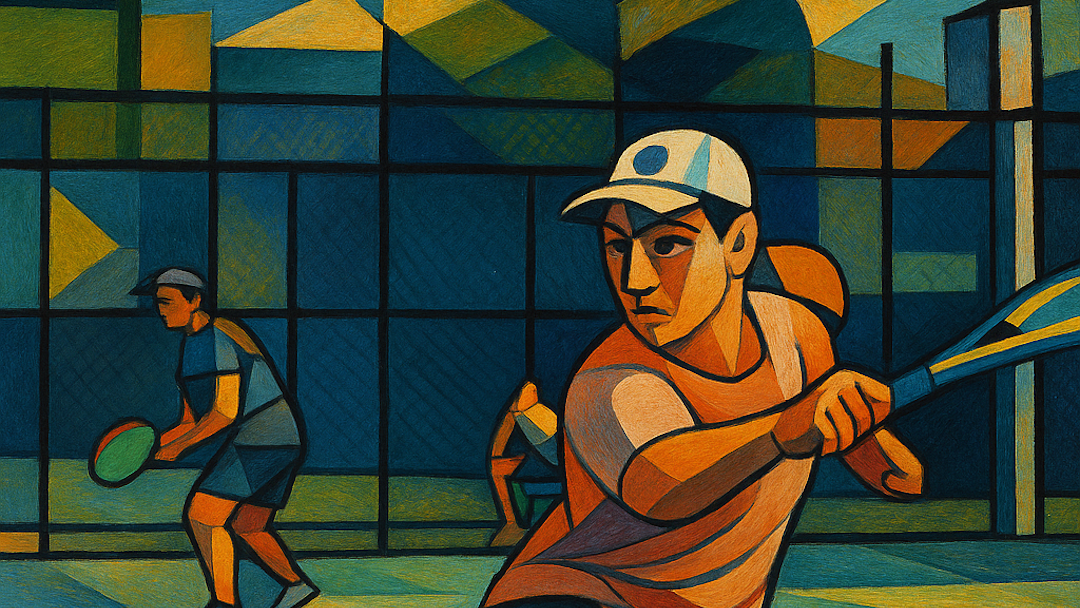Tennis Hits the Books
Unless another book comes tumbling off the shelf at me again, Gyata Stormon’s volume on tennis doubles is the final installment in the series of books that I happen to own on the topic. For what is likely to be a brief window in time, I can stake the claim that I have read all the tennis doubles books that I own. It is an accomplishment, no matter how fleeting the moment ultimately turns out to be.
Stormon developed On the Ball: Doubles Tennis Tactics for Recreational Players based on many years of experience teaching the game of doubles to her students. She builds on the existing body of tennis doubles knowledge overlaid with on her own original thoughts and ideas. Stormon’s greatest achievement might be the organization and clear presentation of advanced tennis doubles concepts in a way that is easy to understand and implement at all levels of play.
I stumbled a little bit over the choice of the word “Recreational” in the subtitle. Throughout my journey on this blog, I have struggled to find one word that describes adults who are serious about competing in tennis. While striving to play at one’s highest levels is fun, “recreational” is not the word I would select to describe the endeavor. As such, serious competitive players may be tempted to pass on this book based only on the subtitle. It would be a shame, because On the Ball contains valuable insight for all levels of tennis doubles play.
Stormon spends a lot of time on the “Shot Cycle,” which is a concept that was not covered by any of the doubles books previously reviewed by this site. The Shot Cycle core concept was derived from the Canadian tennis coaching system. The two phases defined in that context are Sending and Receiving the ball. Storman augments that model with a distinct “Centering” phase to emphasize the split step and ready position. It is a value added contribution to the model. As such, On the Ball communicates the split step with much more detail and depth than typically found in other doubles books.
Another example of the depth of information conveyed is a detailed list of player characteristics that lead to strong play when returning from the deuce and add sides of the court. That list is further segregated with considerations specific to whether the player is right handed or left handed. In addition to using those items to determine which side a player is best suited to play, it can also be used by players to identify and develop the skills required to return effectively from either side.
Storman spends a lot of time describing the tactics of the Australian and I formations. On the Ball includes drills specifically to practice alternate formations. It was a real “Aha!” moment for me to realize that my discomfort with those non-standard formations was likely because I never ever have practiced them. In retrospect, it is an obvious oversight.
Storman also devotes space and time on the “Straight” variation of doubles created when one team switches following a lob. The tactics associated with having the baseline players and the net players on the same half of the court are distinctly different than diagonal positioning. Storman herself observes that most players never practice the down the line variation of one up and one back. It happens frequently enough in match play that it is worthy of investment.
Storman is a fan of the staggered doubles formation, but waits until relatively late in her book to discuss the tactics and techniques. It is included in a chapter dedicated to formations when both players play in the same zone. In other words, staggered formation is only appropriate when both players are in the offensive zone at the net. Storman observes that neither the serving or receiving team can successfully start a point with both players at the net per the rules of tennis. Consequently, the players must first learn effective techniques to allow both players to converge at the net.
On the Ball: Doubles Tennis Tactics for Recreational Players is a stunning achievement in books about effective doubles play. Storman manages to provide incredible depth of information and presenting it in such a way that it is easy to understand by players at all levels. This is the book for tennis competitors that are willing to make an investment in stepping up their doubles competitive level.
 | On the Ball: Doubles Tennis Tactics for Recreational Players |



